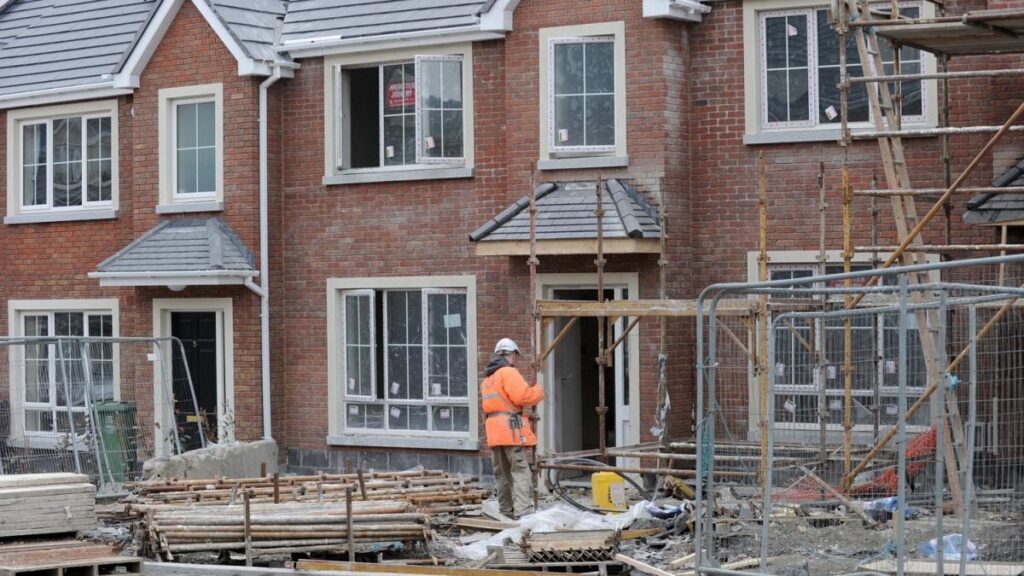Mixed Signals from Ireland’s Construction Industry Amid Ongoing Housing Crisis

As the Irish construction industry tries to ramp up activity and output to address the ongoing housing crisis, recent conflicting reports add to the overall confusion.
According to the Construction Industry Forecast 2023-2025, the industry faces challenges in the residential sector, with new housing starts experiencing a decline this year. However, other segments, such as industrial and logistics buildings, show promising growth. The Glenigan report indicates that the value of residential project starts is set to decrease by 5% to €3.96bn in 2023, following a 15% decline in the previous year. This decline is attributed to factors such as lower property transactions and higher borrowing costs. The reduction in the number of dwellings sold during the first quarter of the year further supports the overall downturn in the residential sector. Despite the current challenges, there is a glimmer of hope for the residential construction industry in the coming years. The report predicts that the value of residential project starts will increase by 15% in 2024 to approximately €4.55bn and further rise by 10% in 2025 to over €5bn.
Interestingly, the Government’s own report contradicts the Construction Industry Forecast above, stating a 7.4% increase in new home commencements during the first five months of 2023 compared to the same period last year, reaching the highest level in eight years. However, it’s worth noting that these figures include social housing, and the Government’s support played a role in driving these numbers.
The Glenigan report adds another perspective, projecting growth in the overall construction sector over the next three years, supported by increased planning approvals. Although the number of residential planning projects secured approval fell by 9% in the first quarter of 2023, the number of residential units on those projects increased by 31% compared to the previous year, indicating potential future growth.
In terms of investment, the residential sector will continue to be a significant contributor, accounting for over half of the overall €7.7bn invested in the construction industry in 2023. However, after a 7% decline in the value of starts last year, the industry is expected to have zero growth this year. Nevertheless, there is optimism for the future, with a projected 12% increase in 2024 (€8.6bn) and a further 6% growth in 2025 (€9.1bn).
Turning to the housing market, the ‘Embarrassment of Riches’ report by Goodbody economists indicates that house building in Ireland is holding up better than initially feared, despite interest rate hikes. The report suggests that the Irish Government has various options to address the housing crisis but warns of an “acute undersupply” of housing that may persist for some time.
The report predicts around 30,000 homes will be completed in both 2023 and 2024, which falls short of meeting the combined demands of a growing population and pent-up demand accumulated over the past decade. To counter the crisis, the report suggests a greater focus on apartment construction, with around 30,350 new homes expected to be built next year.
Regarding house prices, the report forecasts a flat house price inflation in 2023 due to interest rate hikes but anticipates a 3.8% increase in 2024. Dublin prices are expected to experience a slight decline this year, followed by a 4.2% rise in 2024, while prices outside Dublin are projected to increase by 1.7% in 2023 and 3.7% in 2024.
Finally, on the policy front, Housing Minister Darragh O’Brien has ruled out a reduction of the VAT rate for residential construction.
Ian Lawlor
086 3625482
Managing Director
Lotus Investment Group
